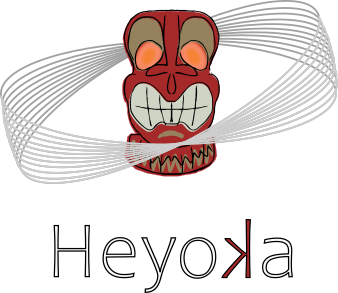Neural ODEs for Space
Project overview

With Neural ODEs we here intend Ordinary differential equations (ODEs) containing artificial neural networks on their right-hand side and thus describing arbitrarily complex systems. The term has been recently popularized, albeit in a less general context, by the work (1). The solution to such ODEs depends on the initial conditions and the network parameters and is hence able to represent arbitrarily complex behaviours. ESA's Advanced Concepts Team scientists are exploring the possibility of learning the network parameters in a number of space related contexts/tasks. This involves calculating the sensitivities of the resulting system behaviours to initial conditions as well as the network parameters. At the center of our work lies heyoka.py, a python library that allows us to quickly compute the variational equation terms needed for setting up the gradient descent algorithm. We consider the two following applications, both using feed-forward neural networks:
- Reducing the final position and velocity error for a time-optimal, constant acceleration, low thrust rendezvous: We here consider the following optimal control task: steering a spacecraft from the asteroid belt to a planet in a target circular orbit as quickly as possible. A possible solution to this problem is to learn the optimal control policy from a dataset of optimal trajectories via imitation learning. We call the resulting neural network a Guidance & Control Network (G&CNET), as it learned to map the current states of the spacecraft directly to the corresponding optimal controls (watch this animation (2) or check out other past projects on G&CNETs: G&C Networks, Optimal Planetary Transfer). After training a G&CNET one can write the neural ODEs of the system and evaluate the network performance from different initial conditions in the asteroid belt. As the network won't have learned to perfectly reproduce the optimal control policy, propagating the system from various initial conditions often results in non-zero final position and velocity errors to the target. Here we explore a way to utilize the sensitivities of the system behaviour to the network parameters in order to close the final gap in final position and velocity errors. This can be done by using these partial derivatives of the final conditions with respect to the network parameters and performing gradient descent parameter updates.
- Matching a reference orbit using a differential atmospheric model: High-precision propagations in low-Earth orbit (LEO) often involve the use of thermospheric density models that are described by non-differentiable and complex models, such as JB-08, HASDM, and NRLMSISE-00 (4). Replacing such models with differentiable ones opens up the possibility of having a fully differentiable high-precision orbit propagator in LEO (check out our project: thermoNETs for more details!) [5]: hence, there has been a growing interest in substituting these models with machine learning counterparts, by either directly learning the empirical models, or training from data. However, there will always be residual errors in how these ML approximators can capture the thermospheric density. These errors will grow as the model is embedded in the ODEs describing the motion of satellites, and will eventually accumulate. In this project, we use neural ODEs to avoid this: once the ML approximator is trained, we embed it in the ODEs and use gradient descent, computing the gradient of the loss with respect to the parameters using the variational equations, to better match high-precision propagation trajectories in LEO. In this way, we correct for residual errors that would accrue in time, and ensure an improved precision in forecasting satellites' trajectories in different LEO regimes.
References
- Izzo Dario, Origer Sebastien, Acciarini Giacomo, Biscani Francesco 2025. "High-order expansion of Neural Ordinary Differential Equations flows". In arXiv pre-print (2025).
- Biscani Francesco, Izzo Dario, 2023. "Heyoka - Machine learning - Neural ODE" https://bluescarni.github.io/heyoka.py/notebooks/NeuralODEs.html
- Izzo Dario, Origer Sebastien, 2022. "Neural representation of a time optimal, constant acceleration rendezvous." Acta Astronautica, https://www.sciencedirect.com/science/article/pii/S0094576522004581
- Chen RTQ., Rubanova Y., Bettencourt J., Duvenaud D., 2018 “Neural ordinary differential equations.” Advances in neural information processing systems 31, https://dl.acm.org/doi/10.5555/3327757.3327764
- Picone JM., Hedin AE., Drob D. Pj, Aikin AC., 2002. "NRLMSISE-00 empirical model of the atmosphere: Statistical comparisons and scientific issues." Journal of Geophysical Research: Space Physics
- Izzo Dario, Acciarini Giacomo, Biscani Francesco. "NeuralODEs for VLEO simulations: Introducing thermoNET for Thermosphere Modeling". In 29th International Symposium on Space Flight Dynamics (2024).
- Acciarini Giacomo, Izzo, Dario, Biscani Francesco. "EclipseNETs: Learning Irregular Small Celestial Body Silhouettes". In arXiv pre-print (2025).